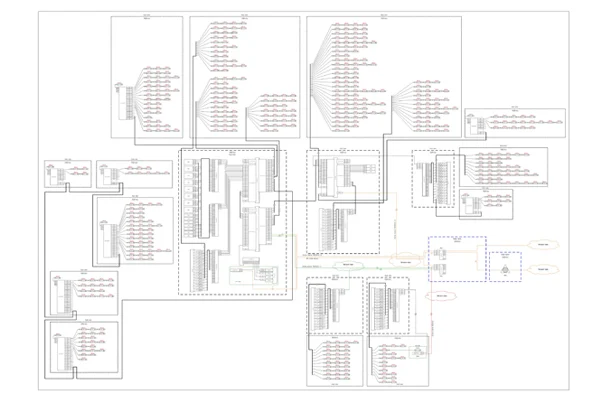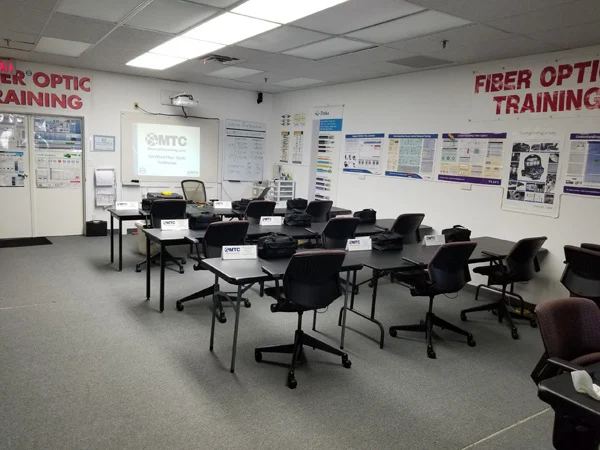PON network equipment has been on the market for years, and there are several options for implementing this architecture with proven characteristics and proven effectiveness. Today, it is safe to say that the PON ecosystem is mature and has its advantages, allowing telecom operators to provide truly high-speed network access with significant savings due to the reduced number of optical fibers (OF) used and simplified infrastructure management.
However, practice shows that when building PON networks, some operators still make mistakes that result in additional administration costs and prevent them from offering additional services to subscribers, and in some cases even negate the advantages of a passive optical network. Such problems can be avoided by strategically planning the development of your network several years in advance, taking into account current trends in subscriber needs and the development of cloud technologies.
Evolution of PON
Like any other standard in demand on the market, PON is constantly evolving. Its evolution has gone through several stages: APON, BPON, EPON (GEPON), GPON. Today GPON is the most popular standard. GPON allows speeds of 2.488 Gbit/s downstream and 1.244 Gbit/s upstream with flexible bandwidth allocation between subscribers, taking into account the types of data being transmitted. Next-generation standards are currently being developed that support speeds of up to 10 Gbit/s in both directions (XG-PON, 10GEPON, NG-PON2). Importantly, some of them will be backward compatible with GPON.
The fact is that there is currently a trend towards the consolidation and unification of access networks. To remain profitable, operators must use the same infrastructure to serve both individuals and B2B subscribers, as well as to connect mobile network base stations. Such requirements impose additional restrictions on the choice of access technology, and it is in such conditions that GPON becomes the best option, as it provides at least twice the bandwidth of other PON versions. However, the cornerstone for creating a universal network is the wide range of subscriber devices offered by the operator to different categories of customers.
Subscriber terminals (ONT)
Unlike FTTB architecture networks, where the fiber optic cable is laid only to the building and subscriber devices remain unmanaged, PON networks allow high-speed fiber optic cable to be brought to each subscriber. At the same time, the operator can offer customers specialized subscriber devices that support centralized management on their part. Each terminal device (Optical Network Terminal, ONT) is registered at the headend, receives settings, and updates the firmware as necessary.
An engineer on the operator’s side can remotely check the signal level on the device, perform diagnostics, and adjust settings. In this way, the telecom operator can guarantee high-quality services and optimize the operation of terminals taking into account the network architecture. In the early stages of the technology’s development in GPON networks, it was necessary to use equipment from a single manufacturer, as each vendor “extended” the G.988 and G.984 standards at their own discretion. Though now operators have been actively using terminals from different manufacturers, and they show good and stable operation.
This provides some freedom of choice, but creates a dangerous precedent for switching to cheaper terminals. It should not be overlooked that they allow for insignificant savings at the installation stage, but subsequently minimize the business advantages of PON. The operator loses the ability to update software and fix bugs, provide additional paid services, and expand the functionality of the network.
Virtually every major manufacturer produces ONT terminals of different classes, which differ mainly in their ability to organize a home or corporate network. Business subscribers need ONTs with advanced mechanisms for controlling latency, bandwidth, and traffic prioritization, while private users are mainly interested in creating a personal Wi-Fi network at home.
New-generation ONTs not only allow you to connect multiple devices via a wireless network, but also to monitor the quality of the Wi-Fi connection for each of them. For example, some ONTs use a Wi-Fi analyzer that allows the operator’s engineer to “see” all connected devices and their signal levels. If the signal level on a device is too weak, the operator can recommend that the subscriber move the connected device or remotely switch it to a less congested channel in the 2.4 or 5 GHz frequency bands. At the same time, beamforming technology helps to create a concentrated beam of radio waves that will “deliver” Wi-Fi to the farthest point of the home without additional repeaters. Support for the 802.11ac wireless standard, along with the use of a 4×4 MIMO antenna array, enables gigabit speeds in the wireless network and ensures guaranteed delivery of high-definition content to all devices in the home network, which means offering additional paid services with a QoS.
Central units (OLT)
Another advantage of PON is that the operator can install central units and make network branching more efficient. Depending on the geography and the pace of business development, OLTs can be installed on the basis of a large chassis (for example, for 10,000 subscribers) and additional boards can be added as needed, or OLTs can be moved closer to subscribers to increase the optical signal splitting efficiency. Today operators can choose compact chassis with a small number of ports that can operate reliably without additional climate control equipment, allowing remote villages or small rural areas to be connected. As the local geography expands, the operator can add new chassis, combine them into a stack, and grow the network on demand.
Practice shows that in some cases it is advisable to combine different access technologies, such as GPON and Gigabit Ethernet. For example, Huawei equipment allows different access technologies to be used in the same chassis, and there’s already a huge number of positive reviews from ISPs who have been able to increase the efficiency and return on investment of their networks thanks to this capability. In reality, operators cannot always accurately predict subscriber base growth rates and guess market needs, so the most advantageous strategy provides for horizontal and vertical scaling of the central node and the use of different access technologies.
When choosing specific solutions for building your network, you should also pay attention to the supplier’s licensing policy. Some solutions that appear affordable at first glance require additional fees for each update and each new feature. Others, on the contrary, offer customers a package deal that includes, in addition to the equipment itself, an equipment management system, 24/7 technical support, and all future software updates for a single fee. It is also important to anticipate additional costs, such as integration with the provider’s OSS/BSS к monitoring system, if the chosen solutions do not have a ready-made interface for the systems in use.
Cloud reality
Another important element of the PON ecosystem is the management system. The faster and more accurately an engineer can diagnose and configure equipment, the fewer man-hours the provider has to spend. Therefore, we are confident that the best option is to create ready-made tools that will allow you to control the entire network with minimal costs.
The future belongs to GPON?
Although the debate over which version of PON is better to invest in continues to this day, practice shows that investments in promising and compatible standards are the most effective. For example, the G.989 specification, also known as NG-PON2, allows you to increase the bandwidth of an optical network while keeping GPON equipment where it is needed. That is why this standard receives much more substantial support from vendors and telecom operators, unlike GEPON technology, which has lower speeds today and less promising prospects in the near future.
The evolution of technology suggests that the use of optical transmitters with adjustable wavelengths and a unified cable infrastructure, achieving speeds of up to 40 Gbps per subscriber, is just a couple of years away. Therefore, leading manufacturers are now incorporating the ability to migrate to new technology without replacing the OLT chassis and software into their solutions. This approach will allow telecom service providers maximize their return on investment in PON and effectively use the passive optical network for several years without unnecessary costs.
Take care of your splice sheets
1000+ ISPs are already saving weeks of work with Splice.me!



